
..........................................................................................................................................................................................................
more than a couple of weeks on a specialized roubaix comp

it is the perennial conundrum; how long is long nough to review a bicycle (or anything else, for that matter)? the average distance ridden by those who review bicycles for the comic would appear to be around 350 miles (563km), a distance that seems more than equitable considering the average length of time for which review models are available. aside from bikeradar's test facility, full to the brim with machinery culled from the manufacturers' test fleets, the average time for which a bicycle holidays on islay would usually be around the three to four week mark.
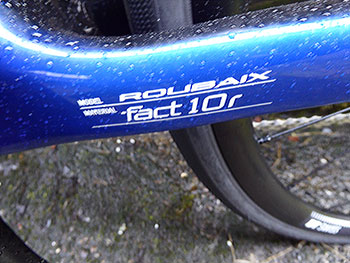
for those pointing out that it would surely be simplicity itself to cover a darned sight more that 560km in three weeks, i'd be inclined to agree. however, thewashingmachinepost is not my full-time occupation, so reviews of any flavour have to be fitted in around the need to earn a living. and it would be tantamount to bare-faced cheek were each item not to be given the time it truly deserves. on occasion, this can result in something of a balancing act. bicycles in particular, deserve every minute of attention, for the majority represent a substantial investment on behalf of any potential purchaser.
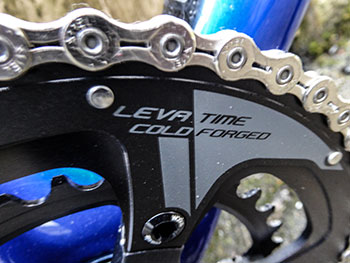
i am, therefore, extremely grateful to william watt at specialized uk who has cheerfully indulged my desire to retain possession of their roubaix comp for far longer than would more usually be the case. though an initial three or four weeks is an adequate length of time to take note of a bicycle's quirks, foibles and delights, as many bicycle owners will be aware, you only really get to know a bicycle when you've ridden it under a sensible number of differing conditions.
though it doesn't happen often, there has been more than a single recorded instance of my posting a considered review only for the product to cease functioning a matter of days later. happily, bicycles have not been amongst that number, but then up till recently, i've rarely had hold of one long enough to find out.
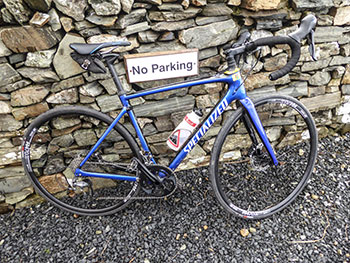
the specialized roubaix comp exists a few notches down from the top tier of roubaix bicycles. a friend on the island owns a roubaix pro which arrives complete with shimano's ultegra di2 and a rather flash set of carbon rimmed wheels. it also bears a price tag somewhat larger than that attached to the roubaix comp that has been my friend and companion for the last two months. as one who still considers electric gears as a solution looking for a problem, i consider the lack of di2 on the comp as something of a bonus. and for purely aesthetic reasons, i'm more than happy that the little v-shaped box nestling in the bottom bracket cleft does not appear until the next bike up in the roubaix range (the expert).

i should also point out in the interests of fairness, that for the past month the bicycle has been equipped with a wheelsmith aero wheelset and challenge 28mm tyres. this in no way denigrates the dt swiss wheels that are offered as standard; i prefer the former for all sorts of reasons, but that's mostly a subjective state of affairs. i do prefer a set of 28mm tyres as opposed to the 26mm supplied as standard, predominantly as they provide a superior answer to islay's crumbling roads.
the roubaix's major claim to fame is the spring cartridge contained within the upper portion of the fork steerer, allowing the rider to tune out the road buzz that, in any case, would inevitably fail to compare with the arenberg forest. as mentioned in my original review, specialized offer three spring weights ranging from the stiffest installed at point of delivery along with medium and light weight options. they also supply an appropriate spacer and gaiter should you wish to alter the bar/stem stack height, an option i have so far declined to make use of. however, as a result of less than scientific discovery, i've found that the medium strength spring seems the most appropriate for my riding style.
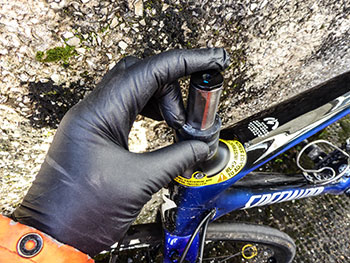
in truth, though i had equated the spring options with rider weight, in point of fact, i think it may be more prudent to consider the sort of terrain over which i tend to ride. though the gent with the di2 pro version of the bike is somewhat larger and heavier than i, he too rides with the medium spring installed. specialized do offer a chart on their website offering suggestions as to which spring ought best to suit for which purpose, but given how simple it is to switch, i'm quite happy to figure it out myself.
i'm not sure that anyone criticises shimano's gear systems these days other than by way of the occasional style faux pas. the compact chainset on the comp is sourced from praxis and thus avoids shimano's ultegra styling which i'm not much in favour of. however, the praxis alternative, mechanically sound and reliable though it has proved to be, is a tad basic looking in the sculpture stakes. the torkx chainring bolts did require modest tightening after a few weeks as a result of an irritating creak, but on a new bike that's hardly unheard of.

the ultegra eleven-speed gearing hasn't missed a beat since the roubaix was extricated from its box and nor has it required any adjustment other than an initial tightening of the front gear cable.
however, the big advantage to riding a review model as if it were my own, is a growing appreciation of just how fabulous a bike it actually is. i have ridden the comp over pretty much every road we've got, including those that are only brought out for special occasions. for a bicycle designed to accommodate pan flat cobbles, it climbs remarkably well and under the direction of an admittedly poor descender, its surefooted navigation of narrow, gravel infested downhills has proved the difference between squeezing the brake levers while sat timorously at the back of the peloton and being the first to safely and speedily reach the bottom.
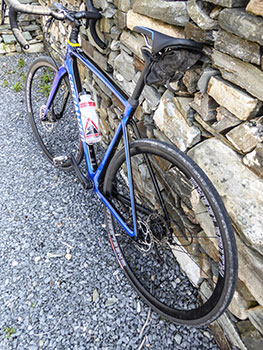
it may seem a tad trite to compare a state of the art carbon bicycle with an ageing pair of slippers, but the comparison bears stating nonetheless. regular riding of the bike that sits in pole position inside the bike shed, would have me convinced that mike sinyard had been supplied with the minutiae of my personal measurements and had designed the frame accordingly. in my opinion, the foregoing sums up precisely the features we'd all like to experience on a new bicycle.
there's little doubt that, due to the intricacies of steerer-based suspension, headset adjustment may have lost a portion of its simplicity, while gaining largely unwanted faff. but having tensioned a slightly loose headset at point of delivery, it has required no more attention since. only time will tell whether headset replacement is the sort of thing that will give shop mechanics cause to reconsider their chosen vocation, but despite giving the roubaix as hard a time as i can manage, any thoughts of having to replace the headset are probably measured in years rather than months.
perhaps the only downside to retaining possession of such an addictive bicycle is the looming thought of ultimately having to send it back to specialized. that, i need not tell you, will be a very sad day indeed.
monday 12 june 2017
 ..........................................................................................................................................................................................................
..........................................................................................................................................................................................................tom simpson - bird on the wire. andy mcgrath. rapha editions/blue train publishing/bloomsbury sport hardback. 224pp illus. £36

so much has the british attitude to cycling success altered in the second decade of the 21st century, that were chris froome to stand on the second spot of the podium in paris at the end of july, it would be considered a major disappointment. in 1984, robert millar missed out on a podium spot at le tour by one place, but took the polka dot jersey, at that time, marking the highest placing by a british rider in the race's history. wiggins and froome have rendered millar's success but a popular footnote in british cycling history; nowadays, there are an impressive number of british riders competing at the sport's highest level and english has become the de facto language of the peloton.
in the 1960s i owned a blue anorak on which my mother had sewn a round patch advertising my purported allegiance to the beatles. i'd bought, with my very own pocket money, an ep (extended play; remember those?) of twist and shout on the parlophone label, a record that still hides amongst others in the attic. maybe one of these days...
however, despite a passing interest in the fab four and occasionally gerry and the pacemakers, because my brother liked them, i not only had absolutely no idea that anybody raced bicycles, but that an englishman was in the process of capturing both european victories and hearts. andy mcgrath's beautifully written and illustrated book 'tom simpson; bird on the wire' has filled an embarrassing gap in my velocipedinal education. as sir bradley mentions in his foreword...
"Here was a guy who had been British pursuit champion, and yet subsequently he went on to win races as diverse as the Tour of Flanders, Tour of Lombardy and Milan-Sanremo."
The abiding memory that most of us have of Tom Simpson is his legendary collapse on the slopes of Mont Ventoux and subsequent castigation as one of the more high profile cycling deaths involving banned substances. yet prior to his unfortunate demise, tom simpson was not only britain's finest cyclist/sportsman, but one of the sport's top riders. in this modern era, british riders have not only the benefit of integrating seamlessly into the international peloton, but ultimately have little or nothing to prove that they deserve to be there in the first place. that britain produces riders of quality is an acknowledged fact nowadays, but in the 1960s, that was decidedly not the case. nor indeed, was there the support culture offered by the likes of team sky and others.
"Simpson was the mine worker's son who went to France with £100 in his pocket and became Britain's first road cycling champion."
few others, such as barry hoban, vin denson, tony hewson to name but a few, had the temerity to do likewise. even in the peugeot days of yates, millar and roche, there was scarcely a panoply of directeurs sportifs and soigneurs eagerly cossetting their new found british contingent. that's not to say life was any harder for tom simpson, but there's little doubt that he pretty much ploughed his own furrow on the continental racing scene.
mcgrath provides both written and pictorial evidence of simpson's prowess on british roads, alluding to his growing obsession with cycle racing even during his school years. this was the formative period that presaged britain's gradual inclusion in the european racing scene.
In 1951, they organised a Tour of Britain race - Simpson played truant from school one day to see a stage finish in Nottingham. [...] (this) paved the way for the first British team at the Tour de France in 1955."
in 1959, simpson figured that he'd accomplished as much as he was likely to do so on this side of the channel. contacting two breton brothers that he'd met through track racing at fallowfield, they agreed to house him in saint-brieuc, a town in northwest france. his move to the continent was well-timed, in that it allowed him to avoid compulsory british miltary service, a potential two-year interruption to a burgeoning career that could conceivably have altered not only simpson's racing career, but that of the others who followed abroad in his tyre tracks.
"Dad, I don't want to be sitting here in 20 years' time, saying to myself 'I wonder where I would have been if I'd went to France."
with continental racing being substantially harder than the british domestic scene, despite winning his second race, simpson was forced to learn his craft the hard way, and not only because he had but few words of the language. as many young riders have discovered over the years, it's not only a case of having the legs, but an accompanying tactical nous.
"I am as strong as anybody in Brittany. All I need now is a head. I throw away too much energy."
on joining the rapha-gitane-dunlop team in 1960, simpson gained tour de france stage winner, brian robinson as a team-mate. simpson's jovial and lively character apparently made him easy to get on with, leading to robinson taking the youngster under his wing. simpson did not squander the opportunity to proffer a "barrage of questions" towards the elder rider. it is something of a cliché to write, but the rest can only be described as history, but one that mcgrath describes in exquisite detail. for bird on a wire enlightens the reader with an enjoyably conversational style with cover and chapter pages that superbly reflect the graphic design of the era.
the author has spoken with simpson's widow (subsequently married to barry hoban), with hoban himself, the aforementioned robinson, emile daems and jan janssen. the latter lived only an hour apart when simpson had based himself in ghent. but what really sets this book on a deserved pedestal but not in any way to undermine the accomplished writing of mcgrath, are the superb illustrations. in a time when magazines and the internet are awash with galleries of photos from each and every world tour race, the quality of those taken in the 1960s is a joy to behold. though the majority are in black and white, the book's large-format pages frequently surprise with impressive colour plates.
you need not be a simpson naif such as myself to delight in this marvellous book; many of a certain age will be well acquainted with the career of one of britain's favoured sons and i think it certain they will enjoy bird on a wire every bit as much as did i. had he lived, tom simpson would have been eighty this year and would scarcely have believed the difference between then and now. it would have been interesting to see how he might have helped shape britain's integration into the international racing scene, were it not for that sad day in july 1967.
the 1968 tour de france was billed as the tour of health, with jacques goddet writing in l'équipe "Dear Tom Simpson, you will not have fallen in vain on the stony desert of the Ventoux." in point of fact, we know that to be somewhat naive optimism. however, simpson's last days should not overshadow an incredible career, one carved from adversity and that ultimately, must be seen as the conclusion of this timely and most welcome book.
"...Altig and Anquetil [...] didn't like riders who went against what they wanted to do."
"How did he gain their acceptance?"
"When he won all those Classics."
sunday 11 june 2017
 ..........................................................................................................................................................................................................
..........................................................................................................................................................................................................typecasting
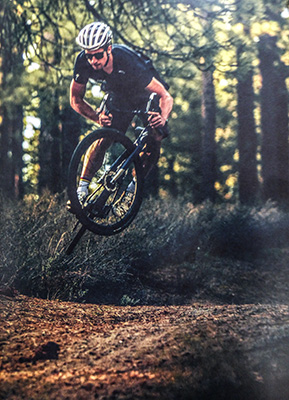
rarely have i known a period of time so crammed with new cycle books, even on the approach to the tour de france. even though i'm a fairly well practiced and quick reader, i cannot deny that i have struggled manfully on one or two recent occasions to post a review that will coincide with the publication date. and the story has not ended yet.
and i can't pretend that the luxury of receiving proof copies of as yet unreleased books several weeks (or even months) in advance doesn't hold a certain attraction. i'm not one much given to ostentation, bragging to all within earshot how excellent is a publication that they cannot, as yet, purchase, but nor can i dismiss that despite a heavy reading schedule, it's something that warms the cockles of one's bottom bracket. but not unnaturally, there is collateral damage to be reckoned with.
as a famous member of the cycling media, i find it a necessary part of day to day living to subscribe to at least a portion of the available monthly cycling periodicals. these are ostensibly required for the purposes of gathering information. for instance, you would think considerably less of me if i were under the misapprehension that nibbles was still riding in the pale blue of astana, rather than the red and blue of bahrain merida. pixelated faux pas are not intended to be part of the deal.
yet the time left available after i've had my tea, washed the dishes, expertly studied one or two snare drum etudes (so i would have you believe), read a chapter or two of the book du jour and left time to watch ned and david describe the day's highlights from the dauphiné, there's not a lot of space left in which to insert a cycle magazine. what i'm trying to say, in a rather roundabout way, is that i currently have a sizeable backlog and that's not only with cycle magazines.
but though i'm a confirmed roadie, well-versed in the ways of skinny wheels and bendy bars, my secret pleasure arrives (less frequently nowadays) in the shape of singletrack magazine, a periodical filled to the brim with pictures and stories about farm gates with springs front and rear.
mostly.
the attraction here is remarkably similar to that experienced when perusing advertisements for dslr cameras. i think this is pretty much a bloke thing, but occasionally those matt black devices with lenses the size of a howitzer and all manner of liquid crystal displays seem like the very items that i need in my life. despite, i must admit, no personal propensity whatsoever to take photos on even an infrequent basis. and there is no chance at all that such a chunky device would even fit in a jersey's rear pocket.
at the risk of being accused of blasphemy, some of the images within the pages of singletrack make mountain biking look like excellent fun. and i'm sure that, for those of a less timid disposition, it more than likely is. yes, i would love to be able to hammer my way round a section of north shore wooden single-track, before leaping tall buildings in a single bound, safe in the knowledge that the springy bits will offer a safe landing. but i'm too much of a fearty for that sort of thing.
however, the important part in the latest edition which arrived but a couple of days ago, is not so much the plethora of springs and knobbly tyres on display, but the wise words from editor chipps chippendale. though his point exclusively refers to the offroad brigade, it is every bit as relevant to those of us on considerably narrower and smoother tyres. i feel i can sum up exactly the point he is making by way of this quote from his editorial.
"We see other riders on the trails and we make decisions about them based on the bike they ride and the clothes they wear."
cycling is an inclusive activity, not exclusive. there is no minimum price of entry; an individual riding a beat up old raleigh while wearing a sweatshirt and trackie bottoms might just be the chap/chapess who'll snatch victory from under your pedals at the village sprint. not everyone needs to be dressed in rapha or endura aboard a carbon colnago to be fast. i can hear the claims of the pelotonese, protesting that this is a crime of which they would never be found guilty...
really?
the photo above is of peter sagan aboard an s-works diverge. judge that if you're brave enough.
saturday 10 june 2017
 ..........................................................................................................................................................................................................
..........................................................................................................................................................................................................breaking the rules
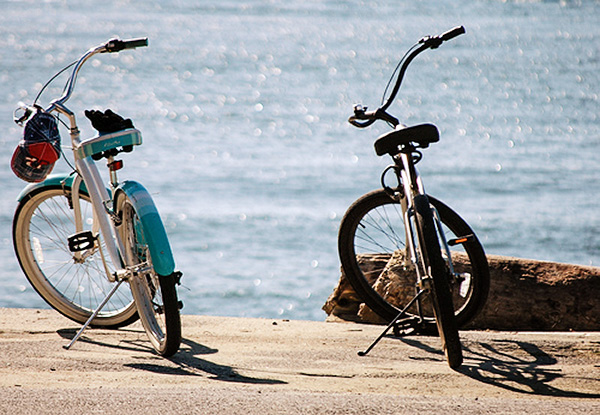
i have come across the occasional, sporadic tweet from individuals disparaging the efficacy of following the rules as proscribed by the keepers of the cog at velominati. and unfortunately i cannot deny that amongst their number, there have been one or two whom i would have thought had the persicacity to know better, but it just goes to show that you never really know someone until the pressure's on. however, i cannot reasonably deny that i have frequently adopted a pick and choose policy when it comes to which rules i think it necessary to obey and those that deserve little more than a knowing smile.
rather obviously, as i have reiterated to the point of annoyance, rules five and nine ought to be adhered to religiously; it would surely be stretching iniquity to breaking point to countenance otherwise? but take rule #29 for example. even a cursory glance under the saddles of those accompanying yours truly each and every sunday morning would offer conclusive proof that nobody (self included) seems keen to bow to the explicable knowledge that being told 'no european posterior man-satchels' might conceivably be considered as infringement of our human rights.
according to the velominati, "saddlebags have no place on a road bike.". interpreted in the manner of those sizeable, leather or cotton-duck devices most often seen on touring bicycles, i can verily see precisely where they're coming from. but, assuming they refer to the small, triangular containers in which we store a spare inner, tyre levers and multi-tool, i'm afraid, in the absence of our very own mavic car, pragmatism wins out every time.
the corollary to this, clearly expressed in rule #31, states that spare tubes, multi-tools and repair kits (does anyone really carry one of those?) ought best to reside in one of the available three jersey pockets. clearly the keepers of the cog have no discernible need to carry coffee money, a mini-pump, digital camera, emergency rucksack, spare gloves (because this is the hebrides; those worn at the outset are almost certainly going to get wet), a waterproof (see the reasoning behind 'spare gloves') and just possibly a lightweight gilet.
the mighty dave always carries a spare casquette for sartorial froth supping.
however, aside from fervently hoping that the carbon fibre strapped to the roof of the car is worth considerably more than the car itself (rule #25), perhaps the one other rule that deserves your undivided attention is that residing at #12: the correct number of bikes to own is n+1. while the cognoscenti will appreciate the genus of this rule immediately, for those less well advised, the letter 'n' refers explicitly to the number of bicycles you already own. thus the ultimate ideal is to always aspire to one more than currently resides in the bike shed.
while one would hope that the velocipedinally inclined would already be well-aware of this rule, i would expect our country's premier politicians to be not only aware, but to be actively proselytising to their respective acolytes. unfortunately, this seems not to be the case with jeremy corbyn who, this past week, revealed a disappointingly cavalier attitude towards the serious work undertaken by the velominati. aside from the deep shame he must have experienced by admitting to owning not only a raleigh, but a trek, he failed to underline that owning two bicycles was, in fact, tautologically the absolute minimum.
there are frequent occasions when one has cause to wonder just how the world got to be in the state it's in today. when there are so many well-educated individuals purportedly working feverishly on our behalf and very much with our best interests at heart, campaigning tirelessly on our behalf, corbyn's apparent ignorance of rule #12 pretty much says it all.
we're all doomed.
friday 9 june 2017
 ..........................................................................................................................................................................................................
..........................................................................................................................................................................................................butcher, blacksmith, acrobat, sweep - the tale of the first tour de france. peter cossins. yellow jersey press 358pp illus. £16.99

the west german town of dusseldorf originated around the 7th and 8th centuries at the point where the small river dussel flows into the rhine. it was in august 1288 that one of the most important points in dusseldorf's history came to pass when the sovereign of the berg region granted the village, township privileges. the modern-day dusseldorf is home to marginally less than 600,000 residents, a sixth of which are foreigners, living in ten administrative districts, all of which came into being in 1975.
but several stone's throws from the excellently named monchengladbach, it is renowned primarily for the importance of the newspapers based there along with a burgeoning film and fashion industries, while the population is much favoured with a wide array of galleries, museums and theatres.
but imagine you'd opted to visit dusseldorf on saturday 1 july of this year and that's all there was: dusseldorf. unless you are beset with philistine tendencies, you'd hardly want for things to do, but a visit on the above specified date would surely mean only one reason; the tour de france. the 2017 edition commences the first of its three-weeks in july from the german town. it's arguably the high-point of the cycling season, when eurosport and itv4 offer wall-to-wall live coverage and more than just a smattering of highlights at all times of the day and night. but suppose it had never existed in the first place?
the fact that the race was devised by henri desgrange as a means of boosting sale of his newspaper l'auto-velo is one of those known facts even to folks with no particular interest in bike racing in the first place. there are bookshelves of publications paying lip service not only to le tour's origination, but offering a compact and bijou prècis of that first race. so far as i know, however, no-one has attempted to offer a eurosport's worth of commentary on the six lengthy stages that comprised the inaugural tour de france in 1903. that is, until now.
the title of peter cossins' impressive edifice butcher, blacksmith, acrobat, sweep alludes to a few of the professions practised by those who opted to make their bid for sporting glory in the early part of the 20th century. sadly, many were to end up financially disillusioned. winner maurice garin earned a reputed 6,125 francs, while his brother had to make do with scarcely a tenth of that. however, even those earning less than 250 francs qualified for a daily stipend of 95 francs. perhaps not the glory many of them had hoped for.
cycling had already proven itself as a potential saviour of newspaper sales. prior to the running of the 1902 edition of marseille-paris, l'auto-velo's sales were at 115,200 rising dramatically to over 300,000 with the edition reporting on the race's conclusion.
"In all, L'Auto-Vélo sold 1,462,279 copies over the week, plus another 700,000 of its six special issues, giving a total sale of 2,117,700 for a paper that would usually sell around 150,000 over the same period."
peter cossins has written a superb account of this single, albeit important inaugural race, described with almost forensic detail. it's the sort of undertaking that we have now come to expect across all forms of media regarding those three weeks in july. but that is in an age of motorbike cameramen, flocks of helicopters and the internet, one of which existed to serve bike racing in 1903.
aside from offering a blow by blow account of the racing, cossins offers an acute analysis of both pre and post rituals, machinations and propaganda, the likes of which has probably not seen the light of day since written in 1903. not unsurprisingly, considering the aims of the sponsoring newspaper, though wordage was hardly in short supply, photography may have been less prevalent. nonetheless, yellow jersey press has sourced a modest array of black and whites to illustrate this historical moment in cycling history.
it seems somewhat trite to mention that the majority of us are already well aware of the winner's identity, but nonetheless, even with the knowledge that it was the butler wot done it, cossins has written a compulsive book that hooks the reader as early as the introduction.
"The race organisers had been praying for a good crowd, certainly more than the few hundred who are milling about [...] That's more than enough to keep the proprietor...and his staff far busier than they would normally be [...] but it hardly bodes well for the inaugural Tour de France."
despite taking place more than a century past, on bicycles that weighed considerably more than even a modern-day mountain bike, the participants in the first tour de france averaged close to 25kph over roads that engendered clouds of dust when dry and rutted mud when wet. pre-determined checkpoints had to be negotiated apparently by each rider shouting out his name as he passed, bearing little comparison with contemporary finish line technology. oddly enough, it was accepted practice to change bikes at these control points when deemed necessary, or to borrow an oft ill-fitting machine from a generous and willing bystander.
this places the original tour at odds with the tale of eugene christophe (coincidentally the first rider to wear the yellow jersey) some ten years later when he was penalised ten minutes for receiving assistance while repairing a pair of broken forks. however, there is little doubt that this inaugural edition was a work in progress as can be gleaned from desgrange's decision not to allow pace-makers over the race's final stage, contrary to the rules in place at the start.
"Desgrange made a big announcement. 'No more pace-makers' the title of his column (in L'Auto) proclaimed [...] the Tour de France is now homogenous and there's no reason that the sixth stage won't be as worthy as the first five."
it should be noted, however, that this turn of events was less about meddling with the race's format than it was a less than satisfactory means of dealing with blatant cheating by the race leader (and subsequent winner). Garin had deliberately nobbled fernand augereau to prevent a late challenge to his lead during stage five. rather than castigate the goose that was in the process of laying l'auto's golden egg in terms of vastly increased sales, desgrange opted to divert the public's gaze in the opposite direction. common assumption at the time believed that garin subsequently paid a suitable sum of money to augereau to ensure no more was said about the matter. the latter had at least the satsfaction of winning the track sprint on the parc des princes.
there cannot surely be amongst the cognoscenti even one who is not familar with the tour de france, particularly in the light of the publishing frenzy that accompanied the 100th edition in 2013. but at the risk of upsetting an apple cart or two, those historical celebrations were superficial by comparison. we constantly impress upon entry level riders that they can hardly expect to be complete cyclists, particularly in the competitive realm, without making themselves aware of the sport's history. for those inclined to listen to such advice, butcher, blacksmith, acrobat, sweep is the new starting point.
a victorious triumph.
thanks to the generosity of yellow jersey press, i have one copy of 'butcher, blacksmith, acrobat, sweep' to give away to the sender of the first correct answer to the following question drawn from the pocket of a yellow jersey.
'in which year did maurice garin win the inaugural tour de france?'
please send your answer, along with full postal address to brian@twmp.net. closing date is on thursday 15 june.
thursday 8 june 2017
 ..........................................................................................................................................................................................................
..........................................................................................................................................................................................................cycle help

it seems only a matter of days ago that i was pointing out that within any amalgamation of cyclists, there will be at least one who not only has extensive mechanical knowledge, but is naively willing to put this to good use should one of the number suffer a breakdown, ranging from a simple puncture to something more onerous. though this may engender vague feelings of guilt amongst the others in the peloton, these quickly pass while standing about watching this hapless, but well-meaning individual carry out the task at hand.
situations like this are all well and good, but what happens if a similar situation occurs during saturday's solo flights. granted, if you are domiciled in either an urban or cityscape it may be possible to find a nearby bicycle shop or opt to call a taxi or other means of transport, but given my daily predicament (so to speak), i'm thinking more of getting stuck in the middle of nowhere. the sort of places where bike shops are thin on the ground and if asked to pinpoint where you've broken down, the streets have no names, only dry stone walls, sheep and fields of barley.

what's a beleaguered velocipedinist to do?
thankfully the rather picturesquely named tudor boca appears to have your best interests at heart. i say your because his solution currently takes the form of an android smartphone app and as we all know only too well, i am bereft of any form of mobile phone, smart or otherwise.
this app, tudor has opted to name cyclehelp because it pretty much does what it says on the pixels. free to download from the google app store, the app depends to a greater or lesser extent on garnering as many users as possible in as short a period of time as possible, predominantly due to its modus operandi. basically cyclehelp enables cyclists to help each other, where that bloke (it's always a bloke) we mentioned at the start is provided with yet another opportunity to show-off his altruistic mechanical skills.
by opening the app it's possible to view current users within a 3.5km radius. when any cyclist in need of assistance creates an alert via the app, all users within a 500 metres receive notification of the distress call. in addition,
 should you find it necessary to leave the bicycle locked somewhere due to it having broken entirely, the location can be pinpointed on a map to allow retrieval at a later time or date. (i can't help thinking that in more remote areas, 500 metres is rather too small an area over which to send a distress call. perhaps tudor might like to offer users the option to increase this to several kilometres where necessary.)
should you find it necessary to leave the bicycle locked somewhere due to it having broken entirely, the location can be pinpointed on a map to allow retrieval at a later time or date. (i can't help thinking that in more remote areas, 500 metres is rather too small an area over which to send a distress call. perhaps tudor might like to offer users the option to increase this to several kilometres where necessary.)
tudor notes that the cyclehelp app is currently only available for download by android users, but is keen to offer an ios version for apple devices as soon as the coding differences can be ironed out. though my luddite tendencies have still kept me at arms length from any form of mobile phone, i'm pretty sure that were one to come into my possession, i'd be highly unlikely to carry it with me when i go cycling. however, i am also more than well aware that i'm in a minority of only one; several of the sunday morning peloton are wont to check various apparently necessary snippets of information at froth supping time, so the timely appearance of tudor's cycle help app ought to be guaranteed a welcoming audience.
if this sounds like the very piece of software that might alleviate any cycling anxieties you may have and the phone in your back pocket owes its allegiance to google, feel free to click the link below.
wednesday 7 june 2017
 ..........................................................................................................................................................................................................
..........................................................................................................................................................................................................ask a pro. deep thoughts and unreliable advice from america's foremost cycling sage. phil gaimon. velopress hardback. 224pp illus. £16.99

one of islay's local businesses relies upon a voluntary board of directors on the parent organisation to operate the company. this, strange to relate, is not a particularly unusual situation, however, disagreeable it may appear. as with many an organisation of similar constitution, these board members are required to stand-down after a predetermined period on the board, at which time, new incumbents will step up to the plate and take over the reins left vacant.
the oddity of a situation such as this is that any particular board of directors will spend their two or three years in situ learning how best to run the business, along with all the little quirks and oddities that such will require. and having learned, they will then take this experience with them on departure, leaving their successors to start all over again.
in order that the latter process become less iniquitous than it might seem, each new director is provided with an induction pack, a selection of papers and the like that will offer them an insight into the history of the business, its principal purpose and the staff that run the facility on a daily basis. it might not be the perfect solution, but it is likely he best that can be achieved under the circumstances.
so how does that work should you harbour desires to join the professional peloton? for instance, where should you send your rèsumé to be considered for a race team? how much chamois cream should be used at one sitting (pardon the pun)? and what do you do if you don't like the products provided by your team sponsor?
these are but three questions that might give cause for endless debate in the sunday morning g.c. ristorante debbie's peloton, but since none of us are, or ever will be, professional cyclists, the answers must be considered pure conjecture. if only we had a handy pro rider to answer all those awkward and completely irrelevant questions that come to mind when we ought better to be concentrating on the traffic through which we ride.
though hailing from across the pond, the very fellow we seek is phil gaimon, late of the worldtour peloton and writer of a regular column in velonews, where he indulged inquisitive and arcane queries from the great unwashed on a frequent basis. ask a pro is the handy compendium that has resulted from such diligence in the face of questionable adversity.
thankfully, rather than adopt a stentorian tone or a gaze of seriousness cultivated to discourage the ephemeral from being phrased as a question, phil gaimon is owner of an admirably tolerant sense of humour. his book is curated into a series of logical sections consisting of neo pro, continental pro and ultimately world tour pro, followed a by a series of appendices such as how to win the race buffet, a guide to host housing and race warm-up routine. the final too hot for velonews is a bit of a humorous red herring.
it would be disingenuous of me to pretend that each and every question and answer shares the temerity of "What kind of power numbers do you put out at threshold?". serious questions such as "Ant-doping wants to know where you are and what you're doing at all times. What's the process, how much really has to be documented and how do you feel about it?" gaimon answers that particular question with the seriousness it deserves, but lightens the mood with a couple of smileable footnotes. and with queries such as "After a crash, why do pros get up and continue, even if they're going to drop out of the race? Why don't they just get into a car and quit right there?", phil offers both serious and less serious answers in his three part riposte.
in short, ask a pro is more or less the perfect book, one that is entertaining, humorous, serious, informative and not one that has need of being read cover to cover in sequence. it's possible that even a mild perusal of the book's contents may bring you to more than one or two questions you yourself have often thought of asking, the answers to which might be of greater priority than some, or all of the others. granted, it's always possible that had the book asked a different pro, the answers might differ wildly; one can think of a particular texan, for example.
however, it's more than likely that the would-be or neo-pro will still require to gain both knowledge and experience in the time-honoured fashion; on the bike in the peloton during races they've scarcely ever heard of. but for those of us endeared of a series of awkward questions during the sunday morning bike ride, this will do very nicely thank you.
velopress publications are distributed in the uk by cordee books.
tuesday 6 june 2017
 ..........................................................................................................................................................................................................
..........................................................................................................................................................................................................